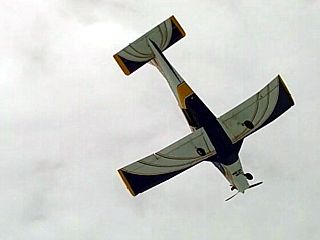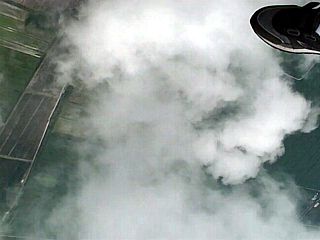cdcollura
EF5
Good day all,
Jumping and opening my parachute nearly 3-miles above the earth can give you a whole new perspective on our planet - and weather to boot.
The following pictures were taken from a skydiving video in south-central Florida while "threading the needle" between lightning-shot thunderheads.

Above: Exiting aircraft at 13,500 feet. The plane is a PAC-750 XL aircraft.

Above: "Hop and pop" (opening parachute immediately after exiting - for a long, fun ride down to earth - 15 min).

Above: Plane diving after I open chute. Yup ... I had to "circumnavigate" those dark clouds!

Above: Vertical towering CU right next to me ... Don't fly through it, or you'll get "sucked up"!

Above: View down at the clouds below me, and my "feet" ;-)
Seeing this from above gives you a "whole new" view!
Jumping and opening my parachute nearly 3-miles above the earth can give you a whole new perspective on our planet - and weather to boot.
The following pictures were taken from a skydiving video in south-central Florida while "threading the needle" between lightning-shot thunderheads.

Above: Exiting aircraft at 13,500 feet. The plane is a PAC-750 XL aircraft.

Above: "Hop and pop" (opening parachute immediately after exiting - for a long, fun ride down to earth - 15 min).

Above: Plane diving after I open chute. Yup ... I had to "circumnavigate" those dark clouds!

Above: Vertical towering CU right next to me ... Don't fly through it, or you'll get "sucked up"!

Above: View down at the clouds below me, and my "feet" ;-)
Seeing this from above gives you a "whole new" view!
Last edited by a moderator:
